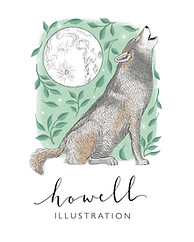Illustrated Map of the Month: Stef Penney's Paris 1870
- Nicola Hawley

- Jan 26, 2024
- 3 min read
It's time for map of the month, where I discuss my favourite maps I've worked on and the story behind them. This month, it's my illustrated map for Stef Penney's book Beasts of Paris.
Contents:
INTRODUCTION
This map was one of the trickiest I've ever had to put together, and the most detailed I've ever drawn. It was also one of the most fun to work on; I felt like a detective, piecing the different parts of together.
THE MAP

RESEARCHING THE MAP
Luckily for me, the author, Stef Penney, really knew her stuff, and supplied me with a huge amount of resources that got this project off the ground.
It did take some research however. Stef knew she wanted certain things included, some of which exist in the present day, some of which are gone, and some of which never existed at all. I had to check a multitude of different maps to find the details of the old city wall and the belt railway and the configuration of roads.
Then I had to try to put all of these historical maps together, none of which matched entirely as they were not only from different time periods, but they were also subject to the decisions of man, and not created on a computer.
CREATING A ROUGH ILLUSTRATION
For the framework of the map, I actually had to use a map that was drawn later than 1870, and then go back to cross check all of the roads with an earlier map, removing the ones that didn't exist at that time. I then had to overlay a map of the belt railway, and also a different map of the city wall, which contained more detail. (For some reason, I decided it would be an excellent idea to include all of the little turrets, which then had to be in the correct places.)
I was also presented with a problem: when you create a map that is intended to be used for end papers for a book, you have to consider the fold of the book and where that will go. In this case, there would be a fold right down the middle of the map - exactly where all of the buildings would need to go! In order to solve this, I created a bigger border, and drew images of the locations within this, numbering where they appeared on the map.
ADDING IN THE DETAIL
For some of the details, such as that of the compass rose, I also drew from maps of that time period, and also leaflets, especially those showing the zoo. A lot of the title block is taken from leaflets distributed at the time; such as the shape and the style of the animals around it.
I also did more research to find out how all of the locations and buildings looked at the time, finding old black and white photos, etchings, drawings and cartoons. One of the touches that Stef really liked about this map, was the cut down trees of the Bois de Boulogne, as the park was razed to create firewood during the siege.
CREATING FANTASY HOUSES: DRAWING PLACES THAT DON'T EXIST
Some of the places Stef wanted to include were places that didn't exist. To help me, she sent me documents with pictures of real life examples that showed how she imagined them. I then took elements of these and pieced the images together.
For example, Ellis' house is taken partly from an image from Stef, but also from black and white photos of similar impoverished Parisian streets. I then added little details like the shutter falling off to bring it to life.
Other places that didn't exist included Cafe Zouave, Yves' studio, Ranvier's butcher shop and Ephraim's residence and they are all pieced together in a similar way.
CONCLUSION
I hope you've liked reading the story behind this map and its creation! If you fancy a deep dive into the story behind another of my maps, then check out:
You can also have a look at my map in greater detail, by heading to my portfolio, here.
As always, thanks for reading!
Nx




Comments